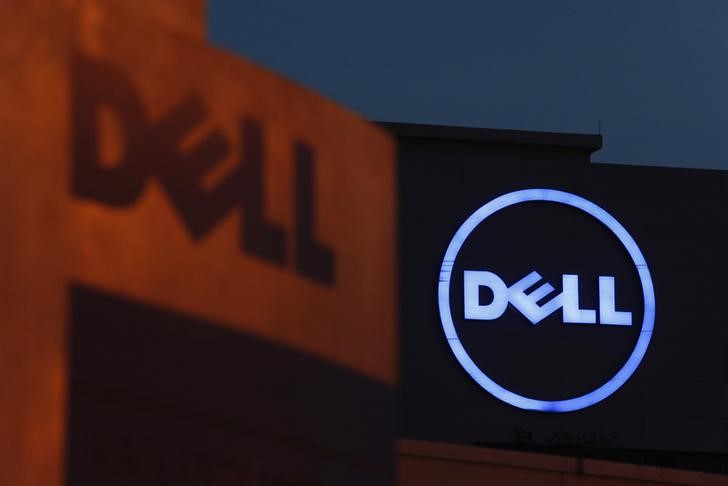By Lynn Adler and Jonathan Schwarzberg
NEW YORK (Reuters) - Computer giant Dell’s decision to wait out months of extreme credit market volatility appears to have paid off as it launched the biggest US syndicated term loan since last November into a market eager for exposure to debt backing the US$67bn (42 billion pounds) acquisition of EMC Corp (NYSE:EMC).
The US$5bn Term Loan B (TLB), which hit the market more than seven months after the largest technology industry acquisition was announced, is US$3bn less than earlier planned, heightening demand for one of the few large new-money deals this year.
Dell waited out months of market volatility before initiating its massive borrowing. Reflecting the broadly improved tone, leveraged loan prices have rallied to levels seen last November after slumping to four-year lows in February.
Investor hunger for Dell’s leveraged loan became clear after a blockbuster investment grade bond sale last week. Orders surged to more than five times the available bonds, leading the company to increase the deal size by 25% to US$20bn.
The size of the TLB was cut, as a result. This loan, similar to the bonds, carries investment grade ratings. The company’s ratings, however, are below investment grade.
There has been a glut of technology sector loan issuance backing mergers. However, Dell’s reduced loan size, investment grade credit ratings on the new loans, and overall secondary market rally likely will increase demand for the company’s acquisition financing, investors said.
“Out of the gate, leverage seems reasonable and cash flow generation is strong,” Jean-Philippe Levilain, global head of leveraged loans at AXA Investment Managers, said of Dell. “The company has demonstrated in the recent past that its focus was on deleveraging, and investors probably give them credit for this.”
Dell’s total adjusted leverage will be 4.0 times after the acquisition with secured leverage coming in at 2.8 times, according to sources. The company anticipates achieving investment grade corporate ratings within two years.
Also, leveraged loan issuance stood at US$160bn at the start of the month, down 25% in the same period last year, according to Thomson Reuters LPC data. Available higher-quality assets are being sopped up.
Pricing on Dell’s seven-year TLB, led by Credit Suisse (SIX:CSGN), is guided in the 350-375bp over Libor range, sources said. There is a 0.75% Libor floor and discount of 99 cents on the dollar.
Lender commitments to the loan are due June 2.
“Everything seems to be on schedule and in line with expectations,” said another investor, noting he was satisfied with the announcement and terms included.
Price guidance is in line with a US$9.75bn loan backing chipmaker Avago Technologies’ acquisition of fellow semiconductor company Broadcom that priced in November 2015 at 350bp over Libor with a 0.75% floor. The loan currently trades around par.
Avago’s corporate rating was Ba1/BB+/BBB-, while the loan was rated Ba1/BBB/BBB. This is comparable to Dell, which is rated Ba1/BB+/BB+ and its proposed senior secured debt, which is rated Baa3/BBB-/BBB-.
Dell’s price talk, in contrast, is tighter than the US$3.75bn term loan and US$1bn-equivalent euro-denominated loan supporting Western Digital’s acquisition of flash storage provider SanDisk Corp (NASDAQ:SNDK) that priced at the end of March during more volatile market conditions.
Western Digital’s corporate rating is Ba1/BB+/BB+ while the loan is rated Ba1/BBB-/BBB-.
The two loans priced at 550bp over their benchmarks with 0.75% floors. There was a discount of 97 cents on the dollar, and the loans have since risen to trade near par.
“Dell is probably handicapped slightly by the fact that there are already a couple of very large issuers in the electronics space, like Avago, Western Digital, NXP and others,” said Levilain. But the underlying backdrop is robust, he said, including the smaller-than-expected size and the “investment grade rating at the loan level which is rare in our world.”

In all, Dell expects to raise about US$43.2bn of debt financing for the EMC acquisition. The combined company will have approximately US$51.6bn of total adjusted debt on its books.